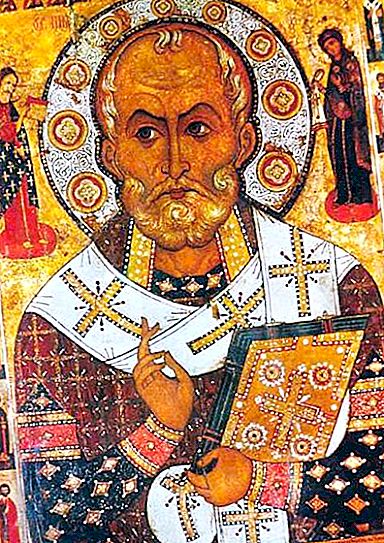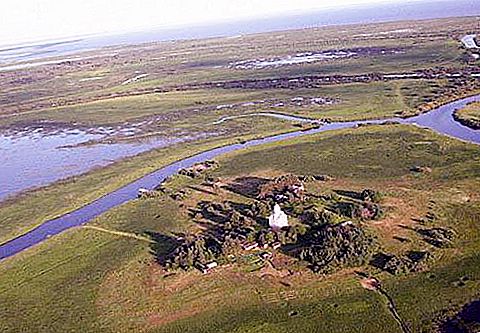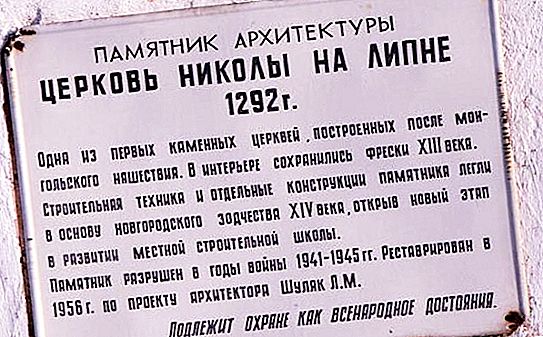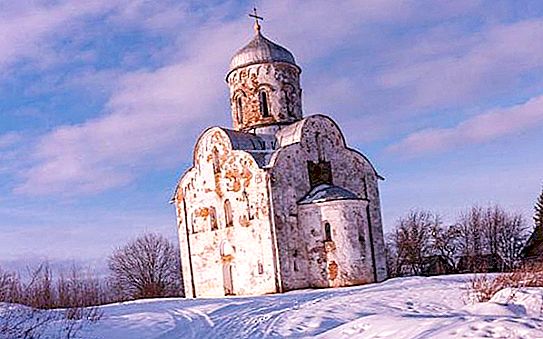Church of St. Nicholas on Lipna took refuge on a small hill of the picturesque island of Lake Ilmen. It is located right at the mouth of the river called Msta. The place is located 8 km from Veliky Novgorod. This Orthodox church, built at the end of the 13th century, is a monument of stone architecture. His main throne was consecrated in honor of Nicholas of Myra, and the limit - in the name of St. Clement.
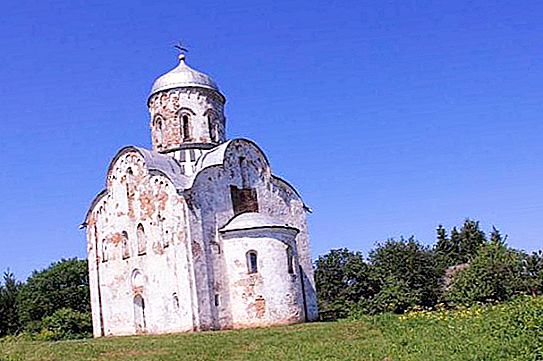
Church of St. Nicholas on Lipna in Novgorod
According to ancient chronicles, this magnificent temple was created in 1292 (this is exactly what Archbishop Clement of Novgorod ordered to do). A very amazing story is connected with this moment.
In 1114, the rightful prince Mstislav Vladimirovich ordered the laying of the church to St. Nicholas in gratitude for the healing. As history remembers, once the prince was overcome by a serious illness, and he began to zealously call for help the name of the Miracle Worker. And on one of these days the prince had a vision: Saint Nicholas the Wonderworker himself appeared to him, who ordered his messengers to go to Kiev to get his icon, while he indicated their appearance and measure to them.
Miraculous icon
Once in the boats, the envoys set off for Ilmen, but as soon as they approached the island of Lipno, they were detained by a violent storm that broke out for four days. And then on the water they found an icon on a rounded board, where Nikolai the Wonderworker was depicted. She was seen in his vision by Prince Mstislav, and it was she who sailed to them from Kiev itself. The messengers immediately brought her to Veliky Novgorod directly to the prince, who prayed to her and received a miracle of healing.
At the place where this icon appeared, a monastery was built in which the main shrine was first a wooden church of St. Nicholas, and then a white stone.
Temple architecture
The architects began to work, focusing, first of all, on one of the last churches of the pre-Mongol period, which was called the Church of the Nativity of the Peran Skete. It became a Novgorod revision of the principles of Smolensk architecture. Here we have in mind a square, four-pillar, cross-domed, one-apsid, one-domed church, only it was expanded even further (10x10), in which decorative blades were present at the corners of the three-blade facade.
In its original form, the facades were without plaster, the walls were made of shell rock and limestone of various shades and sizes. The window arches were decorated with squared bricks, only darker in color. It was a modern innovation of the time (before that they were made of other materials: limestone and plinths).
In addition to all this, the temple is decorated with small niches with embossed crosses over the western entrance gate of a niche with frescoes.
At the base of the dome, in the upper part of the drum, over the brow of small windows and under three-bladed outlines, it was possible to consider the arcature belts, according to researchers, analogues of which are found in the Romano-Gothic architecture of Livonia.
Church of St. Nicholas on Lipna near Novgorod (1292)
When all the stone work of the temple was over, it began to be painted with frescoes, not only from the outside, but also from the inside.
It is known that somewhere in the middle of the XIX century the artist G. Filimonov was a witness and personally painted all the paintings on the eastern wall, just between the shoulder blades and the apse, the semicircular protruding part of the church. And these were compositions in the form of the image of the Mother of God and the Savior, protected by special visors.
The church also immediately arranged the limit of the Archbishop of Novgorod Clement.
In 1528, the Archbishop Makarios introduced a communal charter in the Lipensky Monastery.
Traces of history
The Church of St. Nicholas on Lipna was painted with frescoes in the period 1293-94. When clearing the walls in 1930, well-preserved frescoes were discovered, one of which is the composition “Annunciation”, located on pillars on the east side.
The monastery almost did not suffer during the Swedish occupation of 1611-1617.
By 1763, the monastery included: the refectory of the church of St. Sergius of Radonezh and the Church of the Holy Trinity, the stone church of St. Nicholas, the abbot of two floors, a two-story wooden bell tower with 5 bells and a wooden fence.
But then not the best of times came: in 1764 the monastery was abolished and attributed to the Skovorodsky monastery. Almost all buildings were dismantled in bricks. The church of St. Nicholas on Lipna, remaining from the buildings, was dilapidated by the 19th century and came to complete desolation. Divine services were held there very rarely.
After the 1917 revolution, because of the remoteness from the city, the temple was completely closed, and the church building was badly damaged. The two-tier belfry was demolished.

